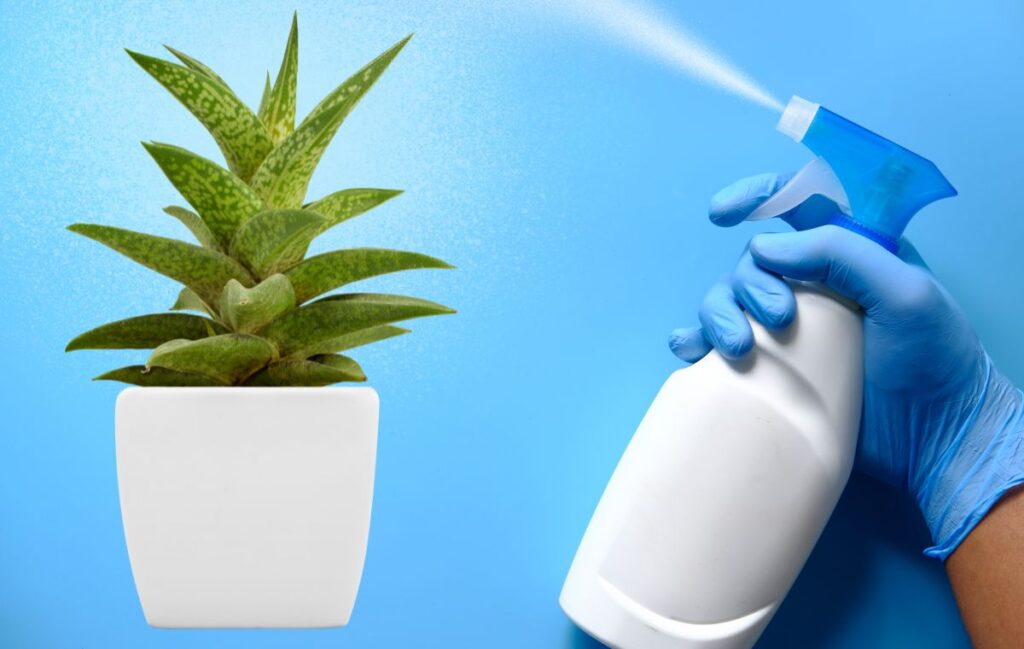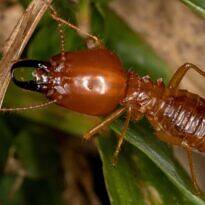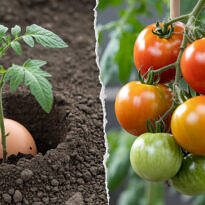Have you ever wondered how it’s possible to combat the pests and diseases that attack your plants without resorting to harsh chemicals or poisons?
Nature and science offer us incredible solutions that are both effective and gentle on the environment. Among these solutions, hydrogen peroxide and bleach (sodium hypochlorite) stand out.
But how can these substances help in caring for your plants? And more importantly, how can you use them safely and efficiently? In this article, we will explore these questions, offering recipes and techniques to protect your plants and promote the health of your plants and in your garden.
Hydrogen Peroxide Properties in Gardening
Hydrogen peroxide is a solution that has been widely used for its disinfectant and oxygenating properties. We generally use hydrogen peroxide to bleach hair or as a wound disinfectant, but did you know it can also be an incredible ally in caring for your plants?
What makes Hydrogen Peroxide so special?
- Soil Disinfection: Hydrogen peroxide can help eliminate pathogens, such as harmful bacteria present in the soil, creating a healthier environment for plant growth.
- Oxygenation: When it decomposes, hydrogen peroxide releases extra oxygen that can be extremely beneficial for plant roots, promoting more vigorous and healthy growth.
- Combat Fungi and Diseases: Its antifungal action is particularly useful in preventing diseases that affect plants, such as leaf spots and rot, keeping them healthier and more resistant.
- Safety and Versatility: Being less aggressive than many chemicals, it can be used safely on various plants, provided it is properly diluted.
Bleach Properties in Gardening
On the other hand, bleach, known chemically as sodium hypochlorite, and commonly found in household bleaches, also has properties that can be extremely useful in combating pests and diseases in the garden.
Benefits of Sodium Hypochlorite for Plants
- Disinfection and Cleaning: Effective in eliminating a wide range of pathogenic microorganisms, helping to keep the soil and gardening tools free of contamination.
- Disease Prevention: When used in diluted solutions, it can prevent the onset of fungal and bacterial diseases in seedlings and established plants.
- Versatility and Efficiency: Can be used in various applications, from disinfecting tools, pots, and germination trays to seed treatment before and during germination.
- Wound Treatment: Like hydrogen peroxide, bleach can help clean plants that are sick, in dendrosurgery (surgery of trees, shrubs, and bonsai) and removing sick parts in desert roses, succulents, orchids, etc.
- Root Pest Elimination: When used in soaking solutions, we can use bleach to eliminate root pests, such as scale insects, nematodes, and fungus gnats.
Now that we understand the unique properties and benefits of hydrogen peroxide and sodium hypochlorite, you may be wondering how to apply this knowledge practically in your garden. Let’s explore this next, where we will detail recipes and methods for using these substances effectively and safely.
Each solution has its particularities and specific applications, so it’s important to understand how to prepare and apply them correctly to achieve the best results.
Hydrogen Peroxide Solution
- Ingredients: 4 tablespoons of 10 volume hydrogen peroxide (60ml) to 1 liter of water
- Method: Mix the ingredients directly in the container of the sprayer or watering can.
- Caution: Do not use creamy hydrogen peroxide that is intended for hair bleaching, only liquid hydrogen peroxide (10 volumes or a 3% concentration) for wound disinfection. You can buy this hydrogen peroxide at pharmacies. Always apply in the late afternoon or early morning, to avoid burns caused by the sun.
Applications:
- Soil Disinfection Solution: Ideal to be used before planting, this solution can help eliminate pathogens present in the soil. Simply water the soil with the mixture and let it act for a few minutes before proceeding with planting.
- Antifungal Spray for Leaves: Use this solution in a sprayer to treat plants affected by fungi. Apply directly to the leaves, preferably in the early morning or late afternoon. Reapply weekly until the problem is resolved.
- Solution for Newly Transplanted Seedlings: When we transplant or repot our plants, it’s common to cause small injuries to the roots or even prune to eliminate excess. Hydrogen peroxide disinfects the wounds, allowing for quick healing and a healthy environment for rooting.
- Solution to Treat and Prevent Rot: If you suspect that your plants may be suffering from root rot, use hydrogen peroxide to treat and prevent the problem. This solution is perfect for when we are in a rainy period, and the excess moisture harms root aeration, fostering diseases.
- Spray for Surgeries: After surgeries on the base of trunks, caudex, and roots of trees, shrubs, desert roses, bonsai, or orchids, etc., spray the wounded areas with the hydrogen peroxide solution for final disinfection. Water with the solution once a week to maintain good aeration of the roots. It also works very well in beheading succulents.
Bleach Solution
- Ingredients: 1 American cup (200ml) of bleach in a 10-liter bucket of water
- Method: Add the bleach directly to the bucket with clean water.
- Caution: Do not mix other products in this broth. Bleach reacts with other chemicals and can cause highly toxic mixtures. Wear gloves when handling plants in the bucket, bleach is corrosive to the skin. Perform treatments in a ventilated place, preferably in open areas. The solution with hydrogen peroxide stains clothes, use clothes that will not be a problem if the solution splashes. Never make this solution or treat the plants under the sun, prefer the end of the afternoon. Some plant species may be sensitive to bleach, do research and perform tests before applying on seeds or high-value plants. Bromeliads, marantas, and carnivorous plants are especially sensitive, do not apply bleach to these plants. Despite its curative and preventive properties, bleach is toxic to most plants, so avoid prolonged contact of plants with the disinfectant solution and never use solutions more concentrated than recommended.
Applications:
- Seed Treatment Solution: This solution can be used to treat seeds before germination, preventing rotting. Soak the seeds in the solution for 10 to 15 minutes, then rinse well with running water before planting.
- Solution for Seed Trays in Germination: Apply this solution to the seed trays during the beginning of germination, bleach eliminates soil pathogens that can cause diseases and harm germination.
- Solution for Disinfecting Tools, Pots, and Germination Trays: Gardening tools can be vectors of diseases. Dipping your tools and pots in this solution for a few minutes can help prevent the transfer of diseases from one plant to another.
- Immersion for Root Scale Insect Treatment: Dip the pot with the affected plants in the bucket with the bleach solution. Keep the pot submerged until no more bubbles come out. Then remove and let it drain on the counter.
How do these solutions combat Pests and Diseases?
You might be wondering exactly how these solutions act in combating pests and diseases. The answer lies in their oxidizing and disinfecting properties, which are capable of destroying the cellular structure of pathogenic microorganisms, including fungi, viruses, and bacteria, without harming the plants when used in the correct dilutions.
Anaerobic bacteria, for example, cannot survive in the presence of oxygen, and they are often involved in root rot. For these microorganisms, hydrogen peroxide is lethal. Similarly, for many pathogens, such as fungi and algae, the chlorine present in bleach is extremely toxic, immediately killing these organisms.
Precautions in Use
It is vital to mention that, despite their effectiveness, these solutions require careful handling and specific precautions:
- Always wear gloves and protect your eyes when handling hydrogen peroxide and sodium hypochlorite.
- Conduct a test on a small area or a few plants before applying the solutions on a large scale.
- Never mix hydrogen peroxide with bleach, as this can result in dangerous chemical reactions.
With these recipes and application tips, you are well-equipped to start experimenting with hydrogen peroxide and bleach in your garden. They offer a safer and more environmentally friendly alternative compared to many chemical pesticides and fungicides. The key to success lies in careful application and monitoring of the plants to ensure their health and vigor.
Tips to Maximize Effectiveness
Monitoring and Regular Application
- Consistency is Key: To effectively prevent pests and diseases, regular application of the solutions is essential. Establish a preventive treatment schedule, especially during the seasons most prone to infestations.
- Observant Monitoring: Stay vigilant for the first signs of disease or pest infestation. The earlier you identify and treat the problem, the greater the chance of success.
Adjustment of Concentrations
- Adapt to Needs: Depending on the sensitivity of your plants, you may need to adjust the concentrations of the solutions. Some more delicate plants may require weaker dilutions to avoid damage.
- Small Tests are Crucial: Before applying a solution throughout the garden, perform a test on a small area or a few plants to ensure there are no adverse effects.
Environmental and Safety Considerations
Safety First
- Careful Handling: Always handle hydrogen peroxide and sodium hypochlorite with care, using personal protective equipment, such as gloves and safety glasses.
- Proper Storage: Store the chemicals out of reach of children and pets, and away from food and drink.
Respect for the Environment
- Responsible Use: Although these solutions are less harmful to the environment than many synthetic pesticides, their use should still be done responsibly. Avoid applying excessively or under conditions where they might run off into water sources.
- Integration with Other Gardening Practices: Integrate the use of these solutions with other sustainable gardening practices, such as crop rotation, composting, and the use of natural predators, to maintain a balanced garden ecosystem.
The use of hydrogen peroxide and bleach provides an effective and environmentally friendly way to combat pests and diseases in your garden. However, as with any intervention in your garden, the key to success lies in the judicious and conscious use of these substances, always with an eye on the health of your plants and the other on environmental impact.
By integrating these solutions into your gardening arsenal, along with sustainable practices, you not only protect your plants but also contribute to a healthier and more balanced environment. Remember, the goal is to create a space where plants can thrive without causing an impact on the environment.
We hope this article has provided valuable and practical tips to enrich your garden and your gardening practices. With the proper use of hydrogen peroxide and bleach, you can keep your garden flourishing, free from pests and diseases, in a safe and sustainable way.
Happy Gardening!







